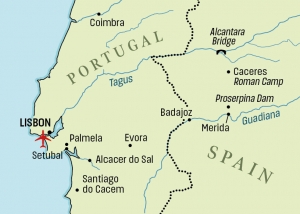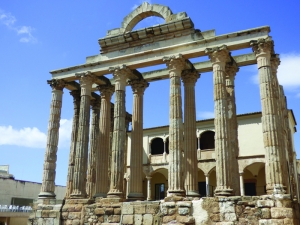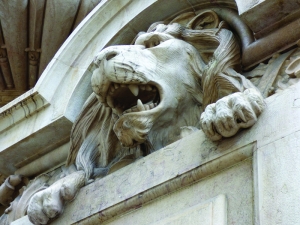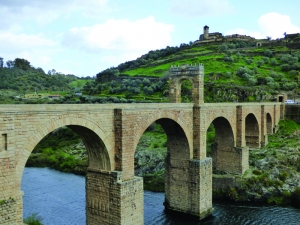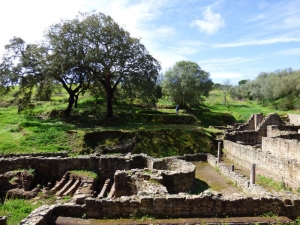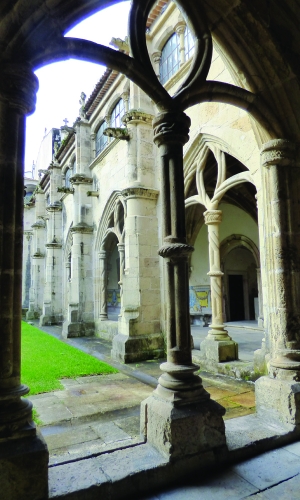
The Lost Cities of Lusitania
The Romans in Portugal & Extremadura
Classical History and Archaeological ToursExperience ToursGeneral History Tours
To be confirmed
The Lost Cities of Lusitania
The Romans in Portugal & Extremadura
Classical History and Archaeological ToursExperience ToursGeneral History Tours
Tour Introduction
Set amidst the backdrop of Holy Week during which we will enjoy a rich heritage of sumptuous, dramatic religious street possessions, this tour visits a range of magnificent monuments left for us to admire across the province. Their variety allows us to see not just the richness of city life, but also the source of the riches and the infrastructure which allowed that life to flourish. This novel archaeological tour takes us through the Portuguese regions of Extremadura, Beiras and Alentejo and the Spanish region of Extremadura. Whilst we will visit many important Roman sites such as Conimbriga and Emerita Augusta, we will also learn how they generally settled in this western extremity of their empire at remote villas, infrastructure sites and even extant factories. We explore some of the region’s great cities such as Coimbra, Caceres, Evora and, of course, Lisbon.
Background
The conquest of Lusitania, the most westerly of Rome’s possessions, began in the 180s BC after raids by the Lusitani tribe into Rome’s province of Further Spain. Lusitani were a fierce tribe, the Roman writer Pliny derives their name from the wild rites (lusus) of the wine god Pan. Long wars of expansion followed with the Lusitani at times giving as good as they got. One chieftain, Viriathus, remains a Portuguese national hero to this day. The area was eventually tamed by Caesar in the 60s BC. It was made a separate province in around 25 BC by the Emperor Augustus and given a new, purpose-built capital at Merida whose Roman name means “The Emperor’s City for veterans”. Two famous governors who would have known Merida were the short-lived emperor Otho and the brother of the the Emperor Severus, Geta. The province was a peaceful one, but never quite forgot its military roots. Units of Lusitanians are found in the Roman army and legionary veterans from Merida are even found buried at Chester. As well as these Celtiberian tribesmen, the area also contained pure Celts as town names like Mirobriga and Conimbriga show, and some Phoenician traders had also ventured here. In prehistory the region was an important outpost of the Tartessic culture.
Highlights
• Enjoy the Spanish town of Merida with its wealth of Roman remains and museums
• Visit the superb Roman remains at Conimbriga, Alcantara, Troia, Alcacer & more
• Walk over the remarkable Proserpina Dam whose earth wall is still in use
• Visit an extant Roman garum factory at Troia
• Explore the UNESCO town of Evora
What's Included
- 4 Star Hotel
- Meals as indicated in the itinerary
- Two drinks i,e wine or beer at each dinner and a welcome drink on first evening
- Expert historians throughout providing a daily variety of talks, presentations and Q&A
- Dedicated Tour Manager
- Modern, comfortable, air-conditioned coach
- Return flights from London (optional)
- The company of like-minded travelers
- Tour information booklet
- Helpful and friendly travel advice
Itinerary
Day 1 – Arrival, Lisbon
Fly London to Lisbon (or join tour at hotel). Check in to Lisbon hotel for one night. We then explore the historic quarter of the city where we explore its Roman Theatre and adjacent museum. (D).
Day 2 – Conimbriga
Drive to the ruins of Conimbriga, the best-preserved Roman town in Portugal. We will explore many of the surviving buildings and great houses dating from the 1st to 3rd centuries: Repuxos House with its wonderful garden with its original hydraulics and fantastic mosaics; the tunnels and stalls of the amphitheatre; the thermal baths and of course its forum and wonderful museum. Continue to Coimbra where we check-in to our hotel for one night before pre-dinner drinks and an introductory talk. (B, D).
Day 3 – Coimbra - Caceres
We take a short exploration of this important university city including the interesting Machado de Castro Museum within which we can view the fine Roman cryptoporticus. Drive to the stunning bridge over the River Tagus at Alcantara, so well-built, that until only recently articulated wagons were using it. Today access is limited to lighter traffic and so we can safely walk its length and see the aedicule dedicated to Trajan. Thence to Caceres where we spend the night. (B, D).
Day 4 – Caceres - Emerita Augusta
In the city itself we visit the lovely Museum of Roman Art with its fine collection of Roman mosaics. Travel to Merida, the one-time Roman capital of Lusitania founded in the 1st century BC known as Emerita Augusta. It boasts one of the finest collections of extant Roman architecture in the Iberian Peninsula. We will spend more than a day exploring its theatre, amphitheatre, circus, bridges and water management systems, temple, many residential buildings and the superb Museum of Roman Art. Check-in to our Merida hotel for two nights. (B, D).
Day 5 – Medellin - Emerita Augusta
We travel out to the superb Roman theatre nestled below the romantic ruins of Medellin’s Medieval castle whilst at Quintana de la Serana we find a Roman watchtower. This afternoon we return to Merida to continue our discovery of this exciting Roman city. (B, D).
Day 6 – Proserpina Dam, Badajoz and Troia
Built to ensure a bountiful water supply to Emerita Augusta, we walk over this earth dam with its retaining wall which still serves the purpose it was designed for 2000 years ago. We continue to Badajoz where we visit its wonderful archaeological museum. Thence into Portugal to see the Roman remains on the Troia Peninsula which include an extant garum factory! We spend the night at Alcacer do Sal where we find the remains of a Roman cult site. (B, D).
Day 7 – Mirobriga and Sao Cucufate
We drive to Santiago do Cacem with its imposing castle and the important Roman archaeological site of Mirobriga with its baths and forum. After lunch we visit the Roman Villa of Sao Cucufate and from thence to Evora where we spend the night. (B, D).
Day 8 – Evora and Depart
We explore the UNESCO listed town of Evora, including the wonderful Roman Temple surrounded by a host of equally magnificent medieval religious buildings. Travel to Lisbon Airport for the return flight to London (or perhaps extend your stay in Portugal). (B).
Recommended Reading List
Your Holiday Essentials
To be confirmed
click here to register your interest
Tour Review
View images of our 2018 tour here

